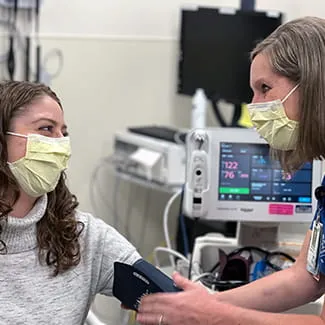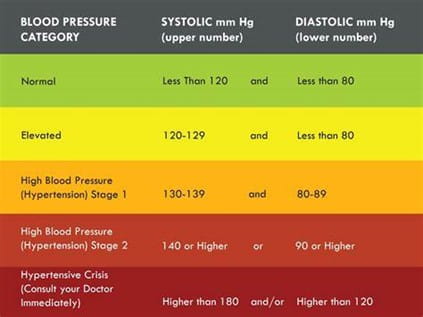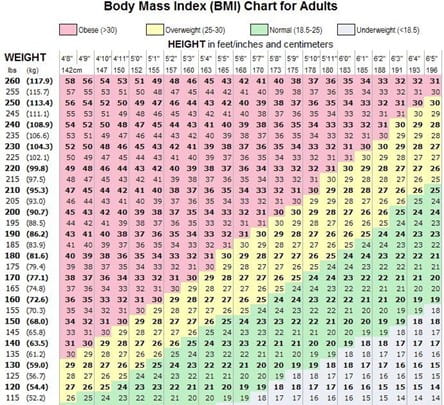February 02, 2022

February is American Heart Month, a time when Denver Health joins with health professionals around the country to encourage everyone to take time to focus on their cardiovascular health. Heart disease is the number one cause of death in the United States and by taking just a few small steps, Americans can make their hearts healthier and avoid conditions such as high blood pressure (also known as hypertension) that can lead to even more serious conditions such as heart disease, heart attack, stroke and/or cardiac arrest.
Biggest Risk Factors for Heart Disease, Heart Attack, Stroke and Cardiac Arrest
- High blood pressure, which can lead to heart disease, heart attack, stroke or cardiac arrest, is known as "the silent killer" because it usually has no symptoms. The best way to detect it is to get screened. Ideally, your blood pressure should be 120/80 or less (see chart), but please talk to your doctor or provider to determine a healthy blood pressure range for you and if they determine it is too high, a plan to bring it under control.

- Family history is another risk factor for heart disease. It is important to know if there is a history of heart conditions in your family because it could affect your own health. Talk to your family members to find out your risk and then tell your doctor what you found out.
- Smoking is the number one most controllable risk factor for heart trouble. Smoking causes blood vessels to constrict which can limit blood flow, so it's important that you make a plan to quit smoking. Call the Colorado QuitLine at 1-800-784-8669 for help with free patches and gum. Denver Health patients can also ask their provider about our Smoking Cessation Clinic and other options for kicking the habit.
- Get screened for high cholesterol. Just like with blood pressure, it's important to know your numbers and discuss a treatment plan with your provider if they are too high. A healthy range for total cholesterol is less than 200, for your LDL number (also known as bad cholesterol), it should be less than 100.
- Too much stress can put extra stress on your heart. While we can't necessarily control certain stressors, focus on what you can control and find fun and healthy ways to relieve your stress, such as coloring, talking to friends and family, exercise or picking up a new hobby.
- We've all heard that sitting is considered "the new smoking," so try to avoid having a lifestyle that is too sedentary. Doing cardio five days a week for 30 minutes a day (or 45 minutes a day for those with diabetes) and performing full body resistance training two to three non-consecutive days a week can help – be sure to talk to your provider about what exercise program would be best for you.
- Having diabetes puts you at higher risk for heart disease. Walking or any other weight bearing exercise is a great way to lower your blood sugar. Be sure to follow your provider's orders for keeping your diabetes under control and find out more about controlling the disease in this blog.
- Use of drugs and alcohol. If you choose to drink, limit yourself to no more than one drink per day for women, or two drinks per day for men (one drink = 12 oz. beer, 8 oz. of malt liquor, 5 oz. of wine or a 1.5 oz. shot of 80 proof distilled spirits or liquor).
- Obesity, or excess body fat, can lead to heart disease, high blood pressure and diabetes. Talk with your health care provider about a plan for achieving a healthy weight. The Body Mass Index chart below can be a good starting point for the general population (someone without a great amount of muscle mass) to get an idea of what weight range they fall into and then discuss that with their physician.

Tips for Preventing Heart Disease, Heart Attack, Stroke and Cardiac Arrest
- The number one way to prevent heart disease and other heart conditions is with regular exercise. Denver Health's Cardiac Rehabilitation team always likes to remind patients that exercise is free medicine. Denver Health exercise physiologist Marina Rice encourages patients to get creative. "A lot of people think they need equipment in order to exercise," said Rice. "Cardiac Rehab was outside for nine months at the park with only chairs and resistance bands for equipment, we had patients walk around the park, bring their own soccer and basketballs, we even played frisbee golf." Find ways to make exercise fun. When the weather is cold, dancing and jumping jacks can be done indoors.
- Make realistic goals. There is nothing worse than setting yourself up for failure before you start, so Rice advises to make little goals as you go. If your goal is to quit smoking, begin with cutting back by one cigarette for the week and go from there. It can take five tries (or more) to quit smoking before some patients are successful with smoking cessation.
- If you don't have a blood pressure machine at home, chances are your local drugstore has a machine that is free to use and you can check your blood pressure there. Knowing your numbers and talking to a provider is the number one way to keep your heart healthy.
- Practice healthy eating habits. A good rule of thumb is to eat a "rainbow" of fruits and vegetables each day. It is recommended to get a minimum of five servings of fruits and vegetables each day (a serving equals: one cup raw, a half cup cooked/steamed, a quarter cup dehydrated). Eat at least one color of fruits and vegetables each day (cherries (red), carrots (orange), squash (yellow), cucumber (green with the skin) and cauliflower (purple)). The deeper the color, the more nutrient dense it is, which makes it better for your heart. For fruits and vegetables that have a skin that is safe to eat - it's best to leave the skin on.
-
Talk to your health care provider with any concerns on your health, only take medications that are prescribed to you and do not stop any medications unless cleared by your physician.
-
Oral health can contribute to heart health as well. Be sure to get teeth cleanings twice a year (or more if recommended by your dentist), brush twice a day and floss once a day.
Tips for Lowering Your Blood Pressure
- To lower your blood pressure, be sure to keep your salt intake to around 2,000 mg per day (around one teaspoon). So many of our foods (canned, boxed and prepared) already have plenty of salt. Reading food labels is a great way to measure this. If you are reading labels, try to keep to less than eight percent of the daily allowance of sodium on the Reference Daily Intake (RDI). Also be on the look out for the serving size, each brand can be different even though it is the same product type.
- If your doctor has prescribed medications to lower your blood pressure, be sure to take them as prescribed. Do not stop taking medications without talking to your health care provider first.
- Try to limit your saturated fat intake. These include foods that stay solid at room temperature such as butter, lard and cheese.
- Increase your exercise daily - talk with your health care provider to come up with a plan. Our Cardiac Rehabilitation team recommends the following to its patients:
- Aerobic general exercise prescription:
- FITT Principle
- F – Frequency – Five days per week
- I – Intensity – Moderate to hard
- T – Type – Aerobic/cardio
- T – Time – 30 minutes/45 minutes for those with diabetes
- FITT Principle
- Resistance training general exercise prescription:
- FITT Principle (full body resistance training)
- F – Frequency – Two to three days a week (not consecutive days)
- I – Intensity – last three repetitions should be hard
- Muscular endurance (high repetitions/low weights)
- Muscular strength (Low repetitions/high weights)
- T – Type – body weight/free weights/machine/pulley system/resistance bands
- T – Time – 10-12 repetitions and two to three sets of eight to ten exercises
- FITT Principle (full body resistance training)
- Aerobic general exercise prescription:

